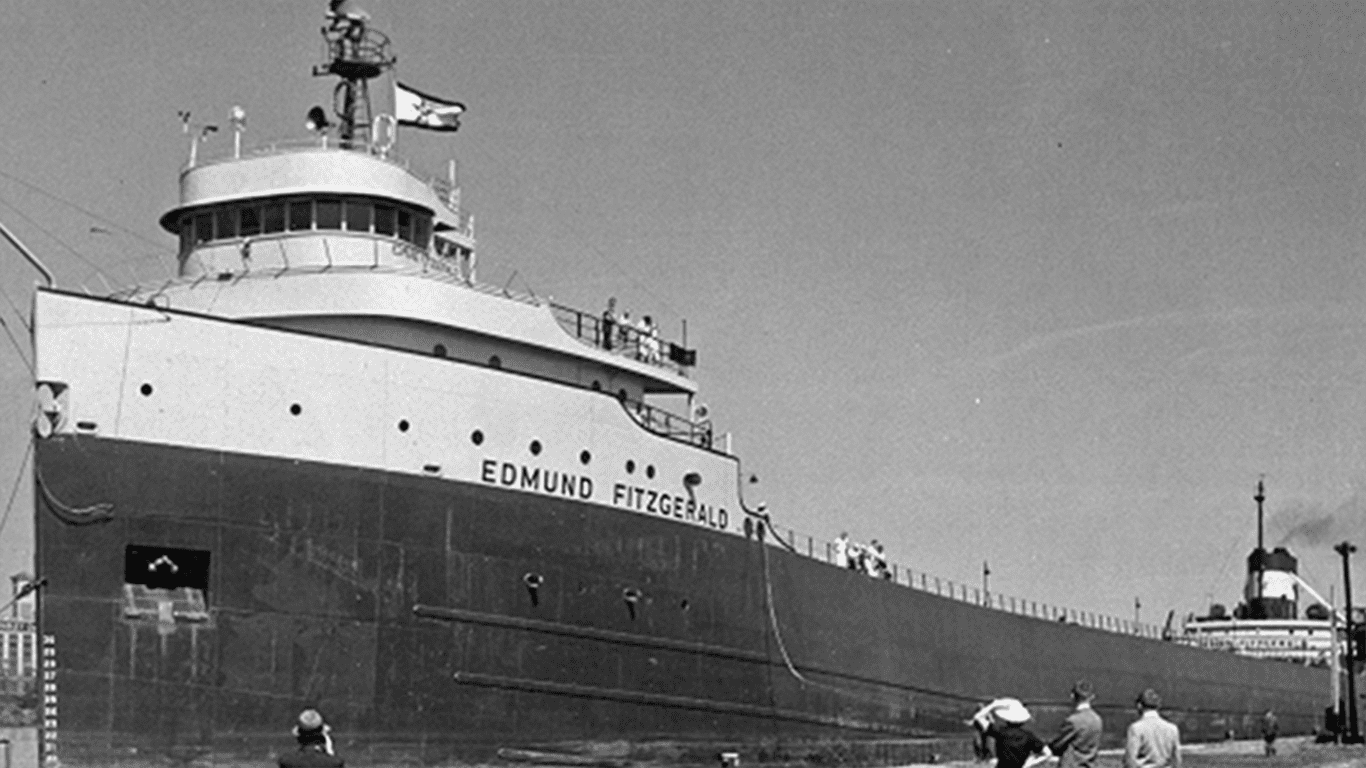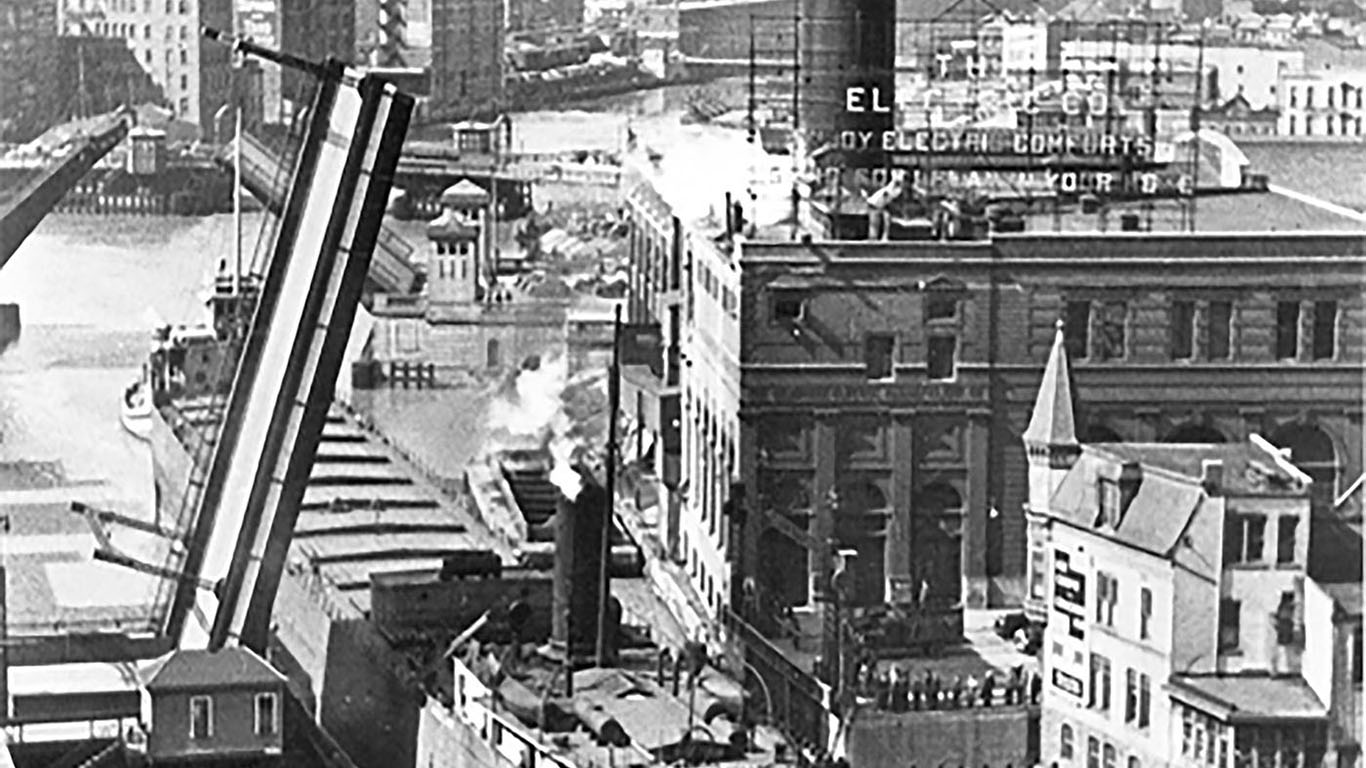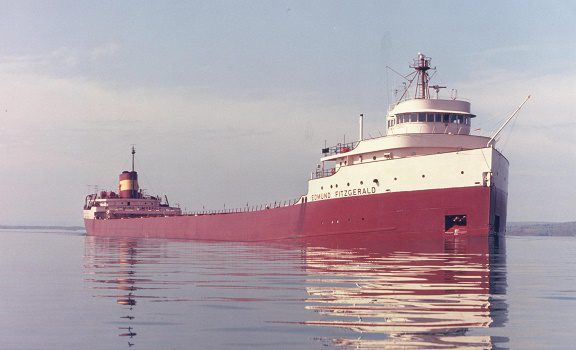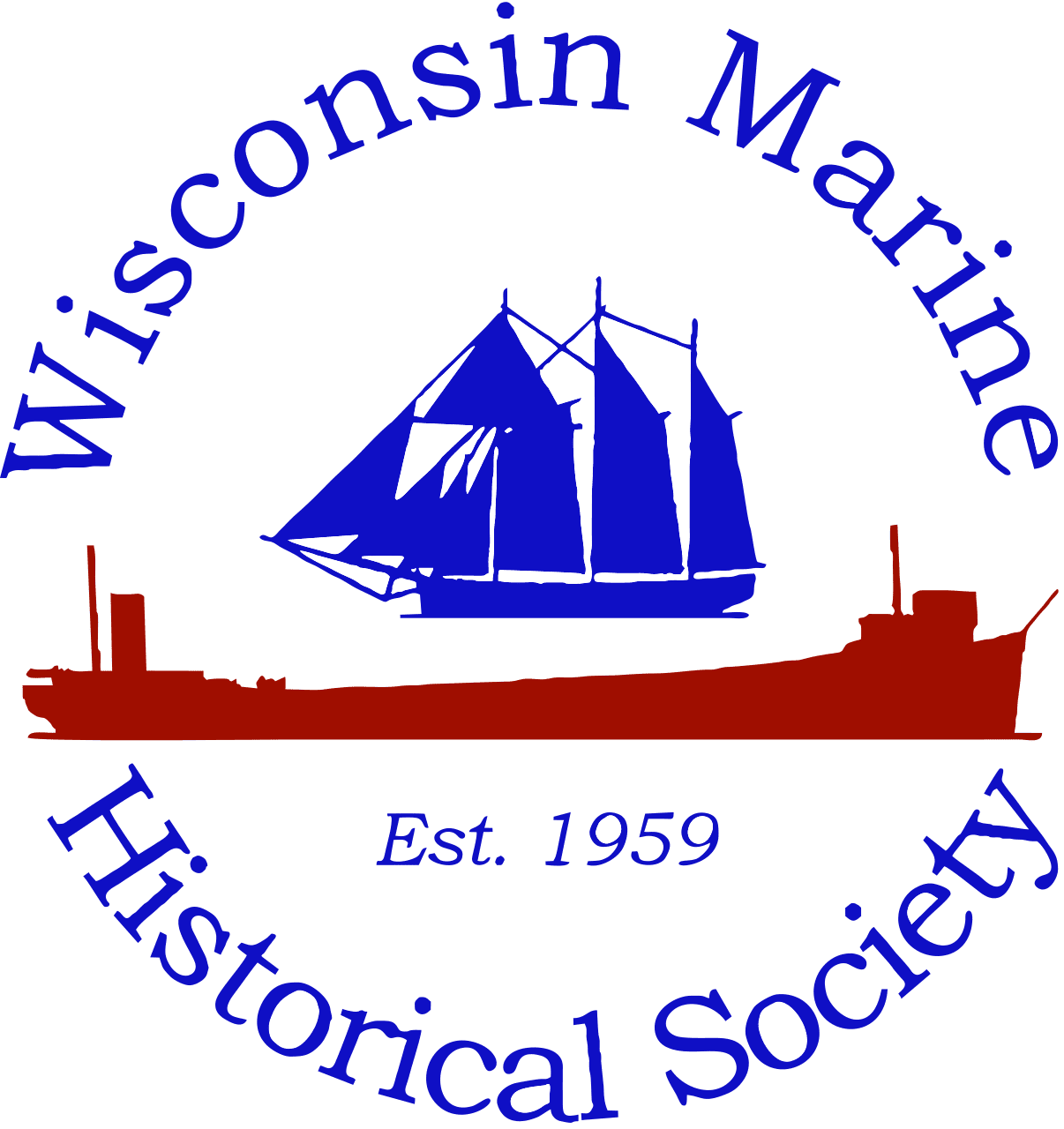
The Edmund Fitzgerald carried taconite iron ore from Duluth, Minn., to iron works near several Great Lakes ports. She sank during a Lake Superior storm on Nov. 10, 1975, with the loss of the entire crew of 29. Great Lakes Marine Collection – MPL/WMHS
We Preserve and Share
Great Lakes Marine History
The Wisconsin Marine Historical Society is a passionate and dedicated non-profit organization committed to preserving the rich history of the Great Lakes. With a membership of 150 individuals, we are proud to be affiliated with the esteemed Milwaukee Public Library.
Uncover Hidden Treasures
The Wisconsin Marine Historical Society boasts an extensive and diverse collection that encapsulates the true essence of Great Lakes marine history. From the early settlers and fur traders to the bustling steamships and iconic lighthouses, each artifact tells a unique story waiting to be unlocked. Immerse yourself in the beauty, magnificence, and hardships of our maritime past.

The Angeline making her way under the Wells Street bridge of the Milwaukee River.
Great Lakes Marine Collection – MPL/WMHS

November 10, 1975
November 10, 1975. The day the EDMUND FITZGERALD was lost along with her captain and crew. One of those historic moments where you will always remember what you were doing when you heard the news.
The EDMUND FITZGERALD was built by the Great Lakes Engineering Works at River Rouge, Michigan, and launched on June 7, 1958. The “Big Fitz” was christened by Elizabeth Bacon Fitzgerald, wife of the ships namesake. Over 10,000 people were there for the launching and over 900 workers were involved with the construction which cost $8.4 million. The FITZ was the largest ship ever to be launched sideways.
Continue reading here

Once There Were Many, Now There are None
By James Heinz
There is an old saying in the shipping business: “The ship doesn’t make any money while it is tied to the dock.” The bulk carriers of the Great Lakes could be loaded with iron ore quickly by using the oldest machine mankind has ever used to move things: Gravity.
That left the problem of how to get the ore out of the ship’s hold. Originally ships were unloaded by men who shoveled the ore into wheelbarrows. It took five days to unload 400 tons by hand. Meanwhile the ship wasn’t making any money tied to the dock. A better solution was supplied by engineer George Hulett, who saw how long it took to unload ships in his home city of Ashtabula, Ohio. His solution: The Hulett unloader.
They were huge machines that looked like monsters from a sci-fi movie. To describe exactly how they worked would take half a page. Their size and operation can best be understood by viewing the attached photos and diagram and by viewing videos of them in operation on You Tube.
About 80 Huletts were built between 1898 and 1954. Almost all were used on the Great Lakes except one in New York City that unloaded garbage. Most were built on Lakes Erie and Michigan. They grew in capacity from 10 to 20 tons and could unload as much as 1,000 tons an hour. The Huletts made it feasible and economical for Great Lakes shippers to builder bigger and bigger bulk carriers and for the steel industry to greatly increase production.
They weighed as much as 1,500 tons. At first powered by steam, they eventually used electricity. They drew so much electricity that when they were in use, they caused the lights in town to dim, and each dock required its own electrical power plant.
Starting in the 1980s the Huletts began to be replaced by self-unloading rigs carried on the ships themselves. This reduced the ship’s total cargo capacity. A ship that had previously taken 18-24 hours to unload using a Hulett unloader could be unloaded in six hours. The quicker turnaround time more than made up for the reduced load. No longer did the ship not make money while tied to the dock. It also enabled ships to unload in any port, whether it had Hulett unloaders or not.
The last Hulett unloaded its last cargo on December 15, 1992, at Whiskey Island in Cleveland. Ohio. The last two Hulett’s at Whiskey Island lingered disassembled for several years due to efforts to preserve them as monuments of industrial engineering but in 2024 Port Cleveland decided to sell them for scrap.
Once there were many, now there are none.
Discover the rich marine history of the Great Lakes.
Officers 2025
- President: Todd Gordon
- Vice President: Christopher Winters
- Secretary: Janyce T. Hetzel
- Treasurer: Nancy Carpenter
- Executive Director: Suzette J. Lopez
- Past President: Carl Eisenberg
- Milwaukee Public Library Special Collections Coordinator: Kirsten Thompson
Trustees 2025
- Nancy Carpenter
- Jackie Q. Carter
- Carolyn Colwell
- Carl Eisenberg
- Kathie Uttech Gordon
- Todd Gordon
- Joe Grygny
- Stephen Haynes
- James Heinz
- Janyce T. Hetzel
- Peter Hirthe
- Cal Kothrade
- Ashley Lemke
- John M. Murphy
- Dan Patrinos
- William J. Staat
- Kirsten Thompson
- Christopher Winters
- Nancy Carpenter
- Jackie Q. Carter
- Carolyn Colwell
- Carl Eisenberg
- Kathie Uttech Gordon
- Todd Gordon
- Joe Grygny
- Stephen Haynes
- James Heinz
- Janyce T. Hetzel
- Peter Hirthe
- Cal Kothrade
- Ashley Lemke
- John M. Murphy
- Dan Patrinos
- Kirsten Thompson
- Mary Beth Volmer
- Christopher Winters
Committees
- Acquisition Curator: James Heinz
- Information Services: Dan Patrinos, Chair
- Maritime Ambassador: Peter Hirthe
- Membership: Stephen Haynes
- Program: Nancy Carpenter, Chair
- Promotion and Marketing: Joe Grygny, Chair
- Shipwreck Ambassador: Cal Kothrade
Newsletter
- Soundings Editor: Kathie Uttech Gordon
Events
July 21, 2025 - Treasures of the Great Lakes - Milwaukee Public Library - 11:30am - FREE
Treasures of the Great Lakes
Monday, July 21
11:30 am-12:30 pm
Milwaukee Central Library
814 W. Wisconsin Ave.
First Floor Meeting Room
FREE
Join us for an interactive PowerPoint
Story of all ships named USS MILWAUKEE
Guest Speaker: James Heinz
This is the story of all the ships named USS Milwaukee including one that fought in the Civil War and influence future warship design.
July 16, 2025 - Book Club - 7 p.m. Zoom
Last Breath: A Tale of Survival in the Depths: The True Story of Chris Lemons’ Fight for Life in the North Sea and the Human Spirits’s Unyielding Will
By Angel O’Brien
“In this book, you will experience one of the most harrowing survival stories ever told. Imagine being trapped 300 feet below the surface of the North Sea, with only a few precious minutes of oxygen left, and the world outside your grasp. Would you have the strength to hold on? Could you keep fighting, even when all hope seems lost? Chris Lemons faced this terrifying scenario in 2012, and against all odds, he survived. This book dives deep into his incredible journey, offering not only a gripping survival story but a powerful message about the human spirit’s ability to endure unimaginable challenges.
You might ask: What would you do if your life depended on your own will to survive? What if your survival didn’t just rely on your own strength but on the unity and trust of the team around you? How do you stay calm when faced with sheer terror, knowing that every breath could be your last?
“This book is more than just a recounting of Chris Lemons’ near-death experience; it’s a testament to the power of resilience, teamwork, and the unbreakable will to survive. It’s a story that will make you reflect on your own life choices and the importance of never giving up; even in the most hopeless situations.
“As you turn the pages, you will: feel the intense emotions of Chris Lemons as he battles against time, isolation, and fear. Understand the incredible risks faced by deep-sea divers, and what it truly takes to survive in one of the world’s most dangerous professions. Witness the profound impact of teamwork and trust in high-risk situations, and how human connection can be a lifeline. Experience the overwhelming relief and joy of survival when the impossible becomes reality.”
The Book Club generally meets via Zoom each month.
Email wmhs@wmhs.org to register for the book club.
May 29, 2025 - Dinner & Spring Silent Auction
Silent Auction, Photographs and Check-in – 5:30pm
June 25, 2025 - Book Club - 7 p.m. Zoom
Freshwater Fury: Yarns and Reminiscences of the Greatest Storm of Inland Navigation
by Frank Barcus
Up and down the Great Lakes, wherever captains and seamen met, one of the chief topics of conversation is still the Great Storm―the worst disaster in Great Lakes history. By men of the Lakes, November 9, 1913 will always be remembered as Black Sunday, for it brought death to hundreds of their companions and destruction to scores of ships of the Lakes fleet. Each man who survived the Storm has a fascinating story to tell.
Freshwater Fury is the first comprehensive history of the Great Storm. Author Frank Barcus, who has met and talked with many survivors during his trips on Lakes freighters over the past twenty years, presents here their vivid eye-witness accounts. The many drawings, maps, and diagrams executed by the author add pictorial interest to the story of this dramatic struggle between men and the elements.
email wmhs@wmhs.org to register
